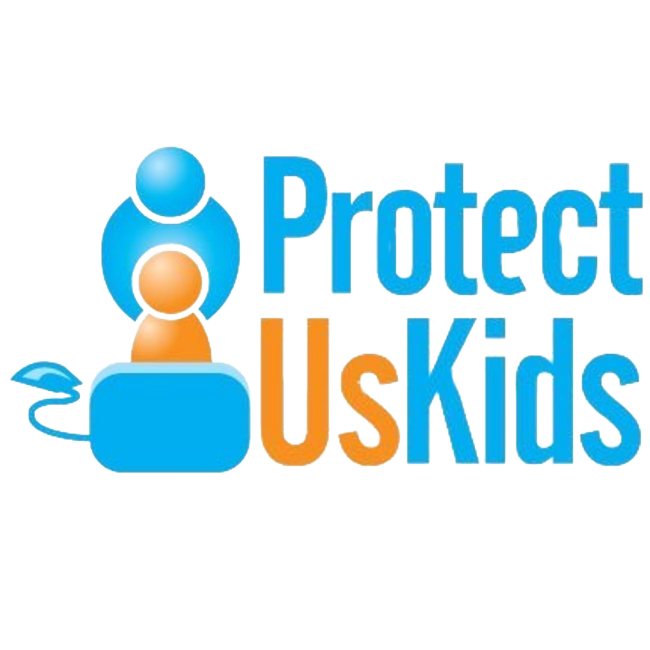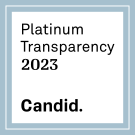
SAFEGUARDING & CHILD PROTECTION POLICY
Our Vision & Mission
Protect Us Kids Foundation (PUK) is dedicated to protecting children and youth worldwide from cyber-related crimes so that they may safely navigate online. Our overall goal is to protect children, especially those in underserved and marginalized communities, who may be more susceptible to predatory maneuvers within the digital environment.
Our Commitment
PUK believes that children have a right to safely and securely navigate cyberspace without falling victim to child predators and exploiters. We are committed towards advancing online safety awareness; stimulating the development of technology-driven safety solutions, and establishing strategic partnerships with other
organizations to identify key indicators that lead to exploitation. Thus, we strive to provide and implement programs that are centered on the unique cultural, behavioral, and societal aspects of marginalized and rural communities that have afforded criminals an increased opportunity to exploit children by leveraging technology.
Purpose
This Safeguarding and Child Protection Policy ("Policy") is meant to describe the responsibility of those working for and with PUK to ensure that our actions and programs align with international child protection principles while ensuring that our efforts do not further victimize the children we seek to protect.
Audience
The Policy addresses the protection of children and young people and defines a "child" as anyone under the age of 18 years as defined in Article 1 of the UN Convention on the Rights of the Child (CRC). The Policy applies to PUK employees, interns, volunteers (including members of the Board of Directors), and independent contractors, both in the United States and overseas. It also applies to relationships and partnerships PUK is engaged with.
Basis
PUK bases its work on the principles enshrined in the CRC, in particular:
● Non-discrimination (Article 2);
● Best interests of the child (Article 3);
● Voice and agency (Article 12);
● Privacy (Article 16);
● Abuse and neglect (Article 19); and
● Sexual exploitation (Article 34)
The Policy is also guided by the Optional Protocol on the Sale of Children, Child Prostitution and Child Pornography, and the WeProtect Model National Response Strategy.
Our Responsibilities
It is the responsibility of PUK to ensure that its staff, practices, and programs do not jeopardize the safety of children in any way. To that end, PUK will take the following measures:
I. Recruitment and Employment
Advertisement for Vacancies
Advertisements and announcements for job vacancies should include references to the Policy and any screening process.
Interviews
All job interviews will specifically contain questions relating to the candidate's previous history and suitability to work for a child protection organization.
All offers of employment shall be subject to a minimum of two satisfactory references from previous employers and the results of background checks for criminal charges of violent crimes or crimes against children.
Background Checks
All potential employees must undergo a standardized recruitment process, including application, interview, reference check, and criminal background check. At PUK's discretion, the same may be requested of interns, volunteers, and independent contractors.
Potential employees, interns, volunteers, and independent contractors must provide written consent for PUK to conduct this screening and must provide truthful and complete information for screening purposes.
Any potential or current employee, intern, volunteer, or independent contractor who provides incorrect or incomplete information for the background screening will not be offered employment and, if a current employee, intern, volunteer, or independent contractor will be subject to disciplinary measures up to and
including termination.
Orientation and Training
All employees, interns, volunteers, and independent contractors will be fully informed of the Policy to ensure they understand the purpose and content.
II. Supervision and Support
Management ensures open lines of communication and encourages an atmosphere of support and encouragement so that employees feel comfortable speaking about and reporting child protection issues.
III. Roles and Responsibilities For the Implementation of the Child Safeguarding Policy
The Chief Executive Officer (CEO) and Board of Directors are accountable for raising the visibility of, and compliance with, the Policy, including reporting and responding to alleged policy violations.
IV. Use of Images in Presentations
Any images (whether still or moving) used in presentations shall not contain child sexual abuse material (CSAM), obscenity, adult pornography, or any other content deemed offensive or inappropriate.
V. Information and Communication Technologies
PUK adopts more technologically advanced ways of working and utilizing information technologies and platforms to engage children, caretakers, and communities. For this reason, PUK will develop and continuously improve technically sound cybersecurity policies and practices to ensure adequate protection from online and technology-facilitated abuse and exploitation.
VI. Confidentiality and Safe Space Announcements
Presentations and training involving child protection professionals should take care not to trigger survivors of childhood abuse. Child protection content should include trigger warnings at the start when content is beyond the routine professional experience of the participants. If participant experience varies or is not known, assume a higher level of warning is required. Presentations of challenging content to non-professionals or parents/guardians require the most robust safe space warnings. Warnings may include the following:
● This presentation will include the following: note if the content includes descriptions, obscured images, cases, or sensitive topics
● We acknowledge there are likely to be survivors or supporters of survivors of abuse among us
● Talking about abuse can cause strong emotions. Feel free to detach or step away if needed. We will not ask you why you stepped away.
● Please share anonymized cases only. If you share a case, participants must agree to seek explicit permission before repeating the details of shared cases.
Case reviews should be anonymized. Explicit permission should be obtained before case details are used in training, and identifying information should be changed. Email correspondence containing case information should be deleted as soon as support has concluded.
In cases of participants without professional engagement in child protection (such as parents/guardians) and/or potentially triggering content, it may be necessary to provide a written safe space notice or station, someone at the door for late arrivals.
VII. Reporting
Employees, interns, volunteers, and independent contractors in the United States will report to the call center or CyberTipline of the National Center for Missing & Exploited Children (NCMEC) any reports received by any means regarding sexual abuse or exploitation of children.
In addition, in the course of conducting research, if a website or other materials seem to contain child sexual abuse content, employees, interns, volunteers, and independent contractors will immediately report that site to the CyberTipline and will not open the link, image, or material. If needed, an employee, intern, volunteer, or independent contractor may also speak with Management for additional support.
Overseas employees, interns, volunteers, and independent contractors should contact local authorities to file a formal complaint as required by law.
VIII. Process of Engagement
Partnership agreements and contracts should, whenever possible, contain a statement that affirms the parties' commitment to the principles articulated in the Policy and put in place protection measures in line with these principles.
In addition, PUK encourages organizations with whom we collaborate to develop child protection policies and/or to abide by the requirements outlined here to protect against the re-victimization of children. Where both institutions have policies, the more restrictive Policy should be followed.
IX. Embedding Safeguarding in PUKs Work
PUK will undertake safeguarding risk assessments, annually at a minimum, to identify areas of safeguarding and child sexual harassment and exploitation and document steps that are being taken to remove or reduce these risks.
PUK will incorporate safeguarding measures into programs and throughout the project cycle through a collaborative program design approach, including with PUK partners and program participants, at all stages to produce better design, monitoring, and evaluation of safeguarding.
PUK will ensure that multiple mechanisms for reporting child sexual harassment and exploitation are accessible to children and adults worldwide, especially individuals who are most at risk of sexual harassment and exploitation. Documented reporting procedures in relevant local languages will be created where necessary. PUK will ensure that anyone responsible for receiving reports understands how to carry out their duties and handle them in a safe and confidential manner. PUK will be transparent with survivors about any obligations or actions that may need to be taken due to their report, including referral to third parties. All actions will be informed by an assessment of risk to all those involved. Partners and communities in PUK activities will be informed of the expected behaviors of PUK employees and related personnel and on how to make a report.
X. Working with Children in Professional Settings
Staff who have incidental contact with children in their work will abide by institutional or PUK Safeguarding and Child Protection Policy, whichever is more restrictive. Taking photographs is by consent only, and images should be cleared by an institution representative to ensure no children are pictured without the written consent of their parents or legal guardians.
One-on-one contact with children should be avoided and any such contact must be reported even if it happens incidentally. No adult should be alone with any child. All contact with children should be in groups, observable and interruptible. Should staff be in contact with children under 18, all precautions should be taken to protect the children’s personal information.
All staff should refrain from touching or other behavior not specifically required to engage with children without their consent, especially where the behavior could appear inappropriate to a reasonable person.
XI. Adult Communication With or About a Child
It is understood that staff will never seek contact with, personal information about, or correspond with a child as part of their work role or otherwise unless this is approved as integral to a program and safeguards are in place. Protective communication should include monitored platforms (such as school and work email) and no one-on-one contact. Any communication with children should be risk-assessed by PUK and the host organization before commencement.
Personal details about a child (children) may never be shared on personal social media accounts (i.e., tagging, sharing full names, birthdays).
Personal or physical information that identifies the location of a child may never be shared on a website or in communications (i.e., posting the address of a camp or name of a school).
Communication about children should be respectful and necessary to provide a safe environment.
Your support can make a difference
Consider contributing as little or as much as you can. Every dollar donated goes toward keeping our programs and PUK rehabilitation and research efforts alive.
Internationally
For all other Countries Not Listed
Contact local investigative authorities or the embassy of the person, or persons, who experienced abuse and request for the regional security office or law enforcement liaison office.
+1 866-772-3354
info@protect-us-kids.org
1629 K St NW #300 Washington, DC 20006 USA
Subscribe to our newsletter
We will get back to you as soon as possible.
Please try again later.
